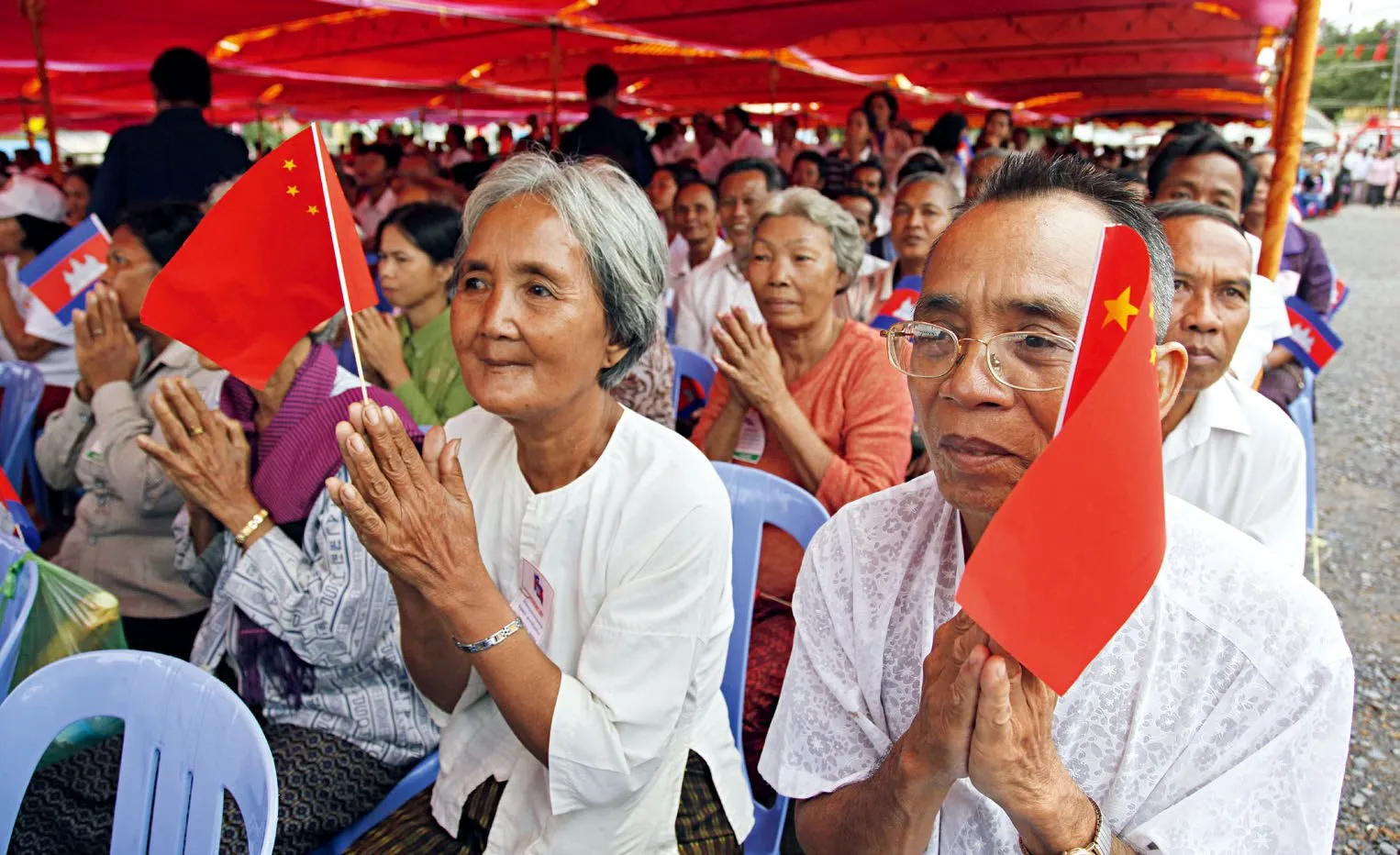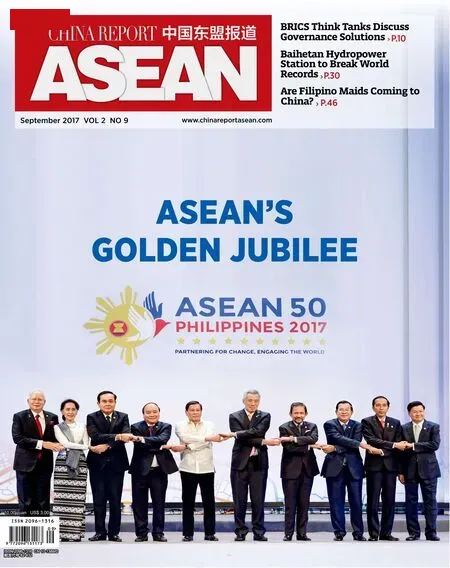Sharing China’s Experience In Poverty Reduction
Sharing China’s Experience In Poverty Reduction
By Zhang Zhiwen, Yu Yichun
For countries in early stages of development, China’s rapid and comprehensive reduction of poverty rates provides valuable experience
The 11th ASEAN-China Forum on Social Development and Poverty Reduction (ACFSDPR) was held in Siem Reap in northwest Cambodia from July 25 to 27. The forum brought together more than 120 government officials, experts, scholars, representatives of China-invested companies and NGOs as well as international organizations’ officers from China and ASEAN countries.
The forum, themed “ASEAN and China: Innovation and Practices on Poverty Reduction,”discussed issues such as China and ASEAN countries’ innovation and best practices on ideas and policies for poverty reduction, how to advance the poverty reduction cooperation between China and ASEAN and how China and ASEAN countries can achieve the goal set in the 2030 Agenda for Sustainable Development.
China’s Contributions to Global Poverty Reduction
Poverty elimination is a common goal for human development and a common challenge for China and ASEAN countries as well. According to the UN Millennium Development Goals Report 2015, the proportion of China’s population in extreme poverty fell from 61 percent in 1990 to below 30 percent in the year 2002, making China the first country to meet the target of reducing extreme poverty (income of less than US$1.25 a day) rates by half 13 years ahead of the 2015 deadline. China contributed more than 70 percent of global poverty reduction over the Human Development Goals period, and China has been the country to lift the largest number of its people out of extreme poverty in world history. At the same time, China was the first country in the world to complete the poverty reduction target set in the UN Millennium Development Goals and has made significant contributions to global poverty reduction, winning widespread praise from the international community.
“China has achieved worldwide recognition for its successful practices in poverty reduction, and China’s experiences have provided beneficial reference for ASEAN countries’ social development and poverty alleviation,”said one senior official at the Cambodian Ministry of Rural Development (CMRD). The cooperation between China and ASEAN countries in the field of poverty reduction has progressed smoothly, from which poverty reduction efforts in Cambodia have benefited.
In recent years, Guangxi Zhuang Autonomous Region in southwest China has carried out extensive exchange and cooperation on poverty reduction with ASEAN countries, which have achieved fruitful results. Huang Shiyong, vice governor of Guangxi Zhuang Autonomous Region, said at the ACFSDPR that since 2007, Guangxi has held 17 training programs on sharing international poverty reduction experiences for more than 400 poverty alleviation officers from more than 70 countries. Guangxi has also conducted a China-Laos demonstration project for poverty alleviation cooperation in communities and a technical assistance demonstration project for poverty reduction cooperation in East Asia. Currently, a China-ASEAN Poverty Reduction Center is being constructed by Guangxi, which will further deepen cooperation on poverty alleviation with ASEAN countries.
Drawing on China’s Best Practices
For the past few years, cooperation between China and ASEAN has been continuously deepened in terms of free trade areas, green energy, cultural exchange and poverty alleviation. At the ACFSDPR, attendees from ASEAN countries said they greatly value China’s ideas and experiences on poverty reduction, some of which are being adopted by ASEAN memberstates.
According to the senior official at the CMRD, tourism development has helped Cambodia reduce poverty. As the number of Chinese tourists going to Cambodia has continuously increased, local people can increase their incomes through selling souvenirs or handicrafts or even becoming tour guides.“Both urban residents and the rural population can benefit from the development of the tourism industry,” said the senior official.

Cambodian citizens at the groundbreaking ceremony of a bridge in the southern suburbs of Phnom Penh.
30%
According to the UN Millennium Development Goals Report 2015, the proportion ofChina’s population in extreme povertyfell from61 percentin 1990 to below30 percentin the year 2002
During the forum, Chinese delegates also exchanged views with their ASEAN countries’counterparts on new practices and exploration of poverty reduction. Li Fengling, a Tsinghua University professor and president of SCER, an energy internet research institute based in Beijing, said that, “As there are insufficient supplies of energy in some ASEAN countries, China is experimenting with using renewable energy in the field of poverty alleviation. We are willing to carry out all-round cooperation with ASEAN countries.”
Zhou Yan, chairman of the Zhongshi Asia-Pacific (Beijing) International Culture Media Company, said that in 2016 his company and the Lao Government co-produced a film, which is also an experiment on alleviating poverty through cultural cooperation.
“We provided both capital and technology support for the Lao side, and we also granted this film’s earnings and distribution rights in 10 ASEAN member states to the Lao Government,”Zhou said. “We hope this movie can spread the cultures of both China and Laos, promote national traditions, enhance mutual understanding and drive the development of the tourism industry in Laos.”
Exploring New Models of Poverty Reduction
Although China and ASEAN countries have scored tremendous achievements in poverty alleviation and social development, they are still facing serious challenges posed by large impoverished populations, low levels of development, imperfect poverty reduction strategies and models and existing social and economic system problems. Attendees at the forum said they were convinced that continuing to optimize domestic socioeconomic development systems and strategies and making a contribution to global poverty alleviation by strengthening international exchange and cooperation in poverty reduction remain important tasks facing China and the international community.
In December 2016, a poverty alleviation pilot project in East Asia initiated by China was launched in Laos. In the next three years, China will cooperate with a combined six villages from Laos, Cambodia and Myanmar to conduct infrastructure construction such as building roads and water supply systems. China will also provide support to local agriculture in terms of crop farming, fish breeding and poultry raising, in addition to carrying out community environmental governance. Material support and relevant training will be provided by China. Through the above measures, a village’s economy can be greatly improved.
An official from the Laos Ministry of Agriculture and Forestry said that during training and cooperation projects provided by China, China not only provided capital and technology support but has also shared its successful experience, which is valuable to poverty reduction efforts in Laos.
The Global Poverty Reduction & Inclusive Growth Portal (GPIG), jointly operated by China Development Gateway and the International Poverty Reduction Center in China, recently launched a project to allow village officials from ASEAN countries plus China, Japan and South Korea to exchange experience, marking a new experiment in poverty alleviation cooperation between China and ASEAN.
A junior CMRD official said that this new project at GPIG introduces poverty reduction experience in an all-round way, which can in turn benefit the entire world. The official said he hopes that rural development in Cambodia can use this platform to learn and digest poverty reduction knowledge, while at the same time, it can actively share information with relevant countries in this regard.

